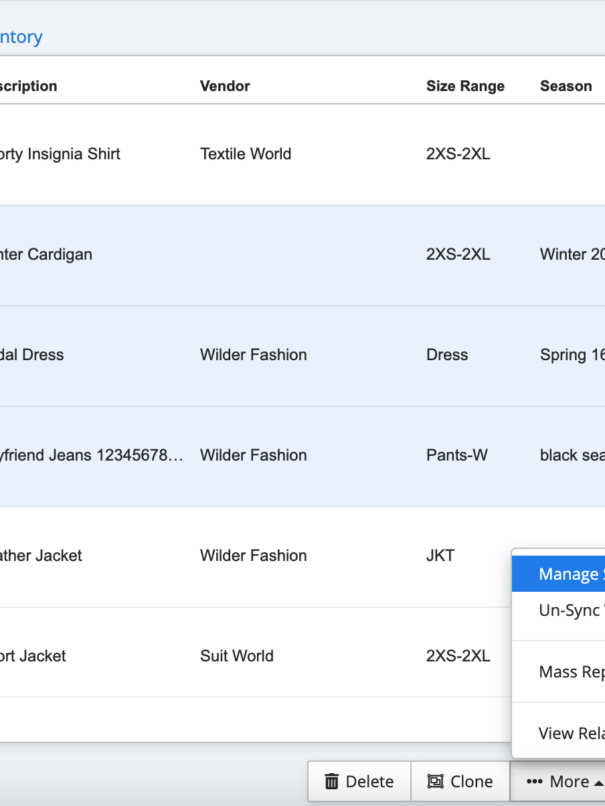The most important characteristic of a successful business is its ability to remain agile. By adapting to technological innovations and embracing their full potential instead of shying away, businesses can gain a competitive edge. The businesses that leverage the power of new technology usually thrive while their counterparts that don’t make changes to processes and procedures are more likely to fizzle.
The extent that these technological innovations affect a business can depend on its industry. Digital disruption can be seen in some industries more rapidly and frequently than others. The way these businesses deal with the latest and greatest technological changes determines their profitability and longevity.
What Is Digital Disruption?
The term “digital disruption” refers to the transformation of industries that was caused by the emergence of digital technologies. The implementation of new technologies across these industries has forced the organization of new business models and has shaken up most markets. With these new technologies, you’re more likely to see:
- New products: With technological innovations, businesses can incorporate product advancements, leading to new offerings for consumers.
- Re-evaluation of the value of existing goods: Technology moves fast, so goods that were produced using older technology can easily lose their value, leading to lower prices for consumers on older products.
- New business practices: In addition to the products, companies themselves can change their processes and procedures by implementing the latest technologies and systems.
Consumers know and want the latest technological trends to be integrated into their products and lifestyle. Therefore, companies that fail to react quickly to the latest advancements during a time of digital disruption could see a dramatic negative impact on their profits and the size of their customer base.
The Healthcare Industry
Hospitals, doctor’s offices, and pharmacies are directly affected by digital disruption. Technological advancements in the healthcare industry have allowed for more personalized and instant care. Many startups and technological innovations focus on healthcare, allowing the industry to grow and change at a rapid pace. According to Rock Health, $4.2 billion was invested in digital health in the first half of 2019. A national consumer survey concluded that 89% of respondents used at least one digital healthcare tool.
How Healthcare Providers Are Adapting
Technological advancements help healthcare providers do their jobs more efficiently while lowering costs and improving the personalization of care for patients. The digitization of patient health records makes it more efficient for healthcare administrators to find records. Smartphone apps allow patients to communicate directly with healthcare providers instantly.
Telemedicine is taking over the industry, allowing patients to skip appointment times completely and see their doctors through online video meetings. Mobile apps also help patients to refill prescriptions, check blood sugar levels, or monitor heart rates. With these healthcare technological innovations, it’s easier to get treatment when needed, allowing these patients to better keep track of their own health.
Film & Music Industries
Traditional cable companies and record sellers are seeing a downshift in subscribers due to the technological advancements in the film and music industries. Music streaming services like Spotify and video streaming services like Netflix make it simple, convenient, and inexpensive for users to access entertainment.
The television industry is also feeling the effects of technological advancements. TV’s share of total U.S. media ad expenditures dropped from 33.9% in 2017 to 31.6% in 2018. The landscape of the film and music industries continues to change to internet-based streaming. It’s estimated that the number of people who watch digital video at least once a month in the U.S. will reach 248.9 million by 2022, climbing from 228.8 million in 2018.
New Methods to Deliver Content to Consumers
New business models have been created in the form of content streaming due to the digital disruption of the television industry. Satellite and cable television providers lost one million subscribers in 2018, most likely due to streaming services. With the loss of interest in traditional cable and the decline of CD and other music purchases, these industries are all seeing a drop in the value of their current services.
The shift to online streaming is growing, which is apparent in the number of competitors entering the industry, including YouTube TV, Roku, and Amazon Prime Video. Traditional content production companies have had to alter the way they provide content to keep up with these industry changes. Many cable companies now offer shows “on-demand” and provide content on different mediums, such as smartphones or tablets.
Travel & Transportation
The way we book our vacations has even changed due to digital disruption. It’s rare for consumers to call around to different hotels and ask for rates like they did in the past. Now, there are several travel sites and smartphone apps that allow travelers to compare prices on hotels, flights, and rental cars.
They can also use these apps to book their travel or change and confirm their reservations. According to Signature Travel Network and The Center for Generational Kinetics, 69% of American leisure travelers begin their travel research online.
Modern Methods of Travel
With the digital disruption of the travel and transportation industry, travelers are taking advantage of faster, safer, more personal, and more accessible ways to travel. For example, Google Translator is a smartphone app that can instantly translate spoken or written word into a native language, breaking foreign travel language barriers.
Electronic payment applications on smartphones or smartwatches, like Apple Pay, provide more financial security, especially while traveling. Online trip planning services use chatbots, blogs, apps, and other services to allow travelers to create a customized itinerary.
While taxis are still thriving in big cities, ridesharing services like Uber and Lyft are increasing in popularity due to their convenience and efficiency. A survey of almost 11,000 people in the U.S. revealed that 36% used ride-sharing services in 2018.
The Apparel Industry
Most retailers have had to cope with and adapt to new changes due to digital disruption. This disruption is also evident in the fashion and apparel industry. Design, logistics, manufacturing, and shipping has been revolutionized due to technological advancements and changes in the way consumers shop for clothing.
The implementation of fashion management software has helped many apparel retailers make the leap to online sales-driven revenue. With software like this, apparel companies can streamline their business processes to ensure both retail stores and online stores are managed efficiently. In this digital age, consumers are used to instant gratification, choices, and swift customer service. Apparel management software allows companies to ensure they can deliver and continue to grow in this technologically advanced atmosphere.
The Changing Face of Fashion
Technology has demanded that apparel retailers speed up their fashion cycles in an ever-changing market, a recent phenomenon known as “fast fashion.” With this fast-paced environment, small and large apparel retailers are forced to quickly adapt to modern technology needs. Apparel management software and online tools are crucial for these businesses to keep up with the industry.
Digital disruption can help industries advance and provide better products and services. However, in order to stay on track and continue earning a profit, businesses have to adapt, change, and streamline processes as innovations move forward.







